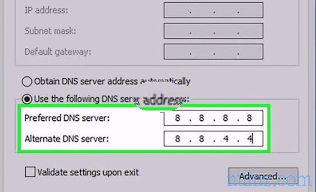If there are problems accessing the Internet, as seen also in the guide to solve connection and network problems, you can use a really useful and powerful Windows 10 tool that automatically creates a complete report on all the history of wireless access and on all network statistics.
This report includes information on all networks used on session duration, any errors that occurred, and also displays output from some network commands.
This report is great for checking when there is an Internet connection problem, for diagnosing problems associated with each Wi-Fi session.
To generate this report of connection errors and access history, you need to use a single command to run in the command prompt or Powershell, with administrator rights.
First, open the command prompt as an administrator by pressing the right mouse button on the Start button or by pressing the Windows and X keys together.
At the prompt, type this command and then press enter.
netsh wlan show wlanreport
At the end of the report processing, the tool shows where it is possible to locate the report which by default is in the folder path:
C: \ ProgramData \ Microsoft \ Windows \ WlanReport .
The file is an html file with a name similar to wlan-report-2018-10-05.html, to be opened on the browser.
The report includes several sections with detailed data related to the networks, the general system, the user and the information of the network card.
The first section shows a graph with a WLAN report which, when you hover over a specific session, displays detailed information about each session.
The red circle with an "X" represents an error.
This interactive graph allows you to view each event with detailed information just by hovering over it and clicking on any event to go to the list of sessions further down in the report.
Under Report Info you will find the report generation date and the number of days covered.
Under General System Info you can read the details of the PC-computer name, the manufacturer, the product name of the system, the date and version of the BIOS and other things.
Under User Info, it includes general information about the user who generated the report, such as the user's username, domain and DNS domain.
Under Network Adapters, you will find the detailed list of all network cards on the PC, with device name, PNP ID, global unique identifier (GUID), driver and date and other information.
Script Output, shows the result of several command prompt commands included in the report, to see more details regarding network adapters and WLAN information.
The commands launched by the report are:
- ipconfig / all shows IP address and other network parameters such as DNS servers and gateway.
- netsh wlan show all shows the details related to the Wi-Fi card, including its features, all the Wi-Fi profiles on the PC and a complete list of all the networks detected during the execution of the report.
- certutil -store -silent My & certutil -store -silent -user My : displays a list of all current certificates stored on the PC.
Under Profile Output you will find a detailed list of all the Wi-Fi profiles stored on the PC and the information used to connect, except the encrypted keys and passwords.
The summary is divided into three parts and shows successes, failures and warnings of the wifi connection, with the duration of each session and the reasons for disconnections.
In the end, in the last section called Wireless Sessions you will find a very detailed list of all the events that occurred for each Wi-Fi session.
Each session is separate and you can press the plus sign to expand an event and read even more details about it: the interface name, the connection mode, the connection profile, the network name and the reason for disconnection.
So whenever your computer has problems connecting to a wireless network, you can run this command to get a detailed report of the last three days of activity and detect connectivity problems.
READ ALSO: Solutions for wifi and router connection problems
This report includes information on all networks used on session duration, any errors that occurred, and also displays output from some network commands.
This report is great for checking when there is an Internet connection problem, for diagnosing problems associated with each Wi-Fi session.
To generate this report of connection errors and access history, you need to use a single command to run in the command prompt or Powershell, with administrator rights.
First, open the command prompt as an administrator by pressing the right mouse button on the Start button or by pressing the Windows and X keys together.
At the prompt, type this command and then press enter.
netsh wlan show wlanreport
At the end of the report processing, the tool shows where it is possible to locate the report which by default is in the folder path:
C: \ ProgramData \ Microsoft \ Windows \ WlanReport .
The file is an html file with a name similar to wlan-report-2018-10-05.html, to be opened on the browser.
The report includes several sections with detailed data related to the networks, the general system, the user and the information of the network card.
The first section shows a graph with a WLAN report which, when you hover over a specific session, displays detailed information about each session.
The red circle with an "X" represents an error.
This interactive graph allows you to view each event with detailed information just by hovering over it and clicking on any event to go to the list of sessions further down in the report.
Under Report Info you will find the report generation date and the number of days covered.
Under General System Info you can read the details of the PC-computer name, the manufacturer, the product name of the system, the date and version of the BIOS and other things.
Under User Info, it includes general information about the user who generated the report, such as the user's username, domain and DNS domain.
Under Network Adapters, you will find the detailed list of all network cards on the PC, with device name, PNP ID, global unique identifier (GUID), driver and date and other information.
Script Output, shows the result of several command prompt commands included in the report, to see more details regarding network adapters and WLAN information.
The commands launched by the report are:
- ipconfig / all shows IP address and other network parameters such as DNS servers and gateway.
- netsh wlan show all shows the details related to the Wi-Fi card, including its features, all the Wi-Fi profiles on the PC and a complete list of all the networks detected during the execution of the report.
- certutil -store -silent My & certutil -store -silent -user My : displays a list of all current certificates stored on the PC.
Under Profile Output you will find a detailed list of all the Wi-Fi profiles stored on the PC and the information used to connect, except the encrypted keys and passwords.
The summary is divided into three parts and shows successes, failures and warnings of the wifi connection, with the duration of each session and the reasons for disconnections.
In the end, in the last section called Wireless Sessions you will find a very detailed list of all the events that occurred for each Wi-Fi session.
Each session is separate and you can press the plus sign to expand an event and read even more details about it: the interface name, the connection mode, the connection profile, the network name and the reason for disconnection.
So whenever your computer has problems connecting to a wireless network, you can run this command to get a detailed report of the last three days of activity and detect connectivity problems.
READ ALSO: Solutions for wifi and router connection problems

















